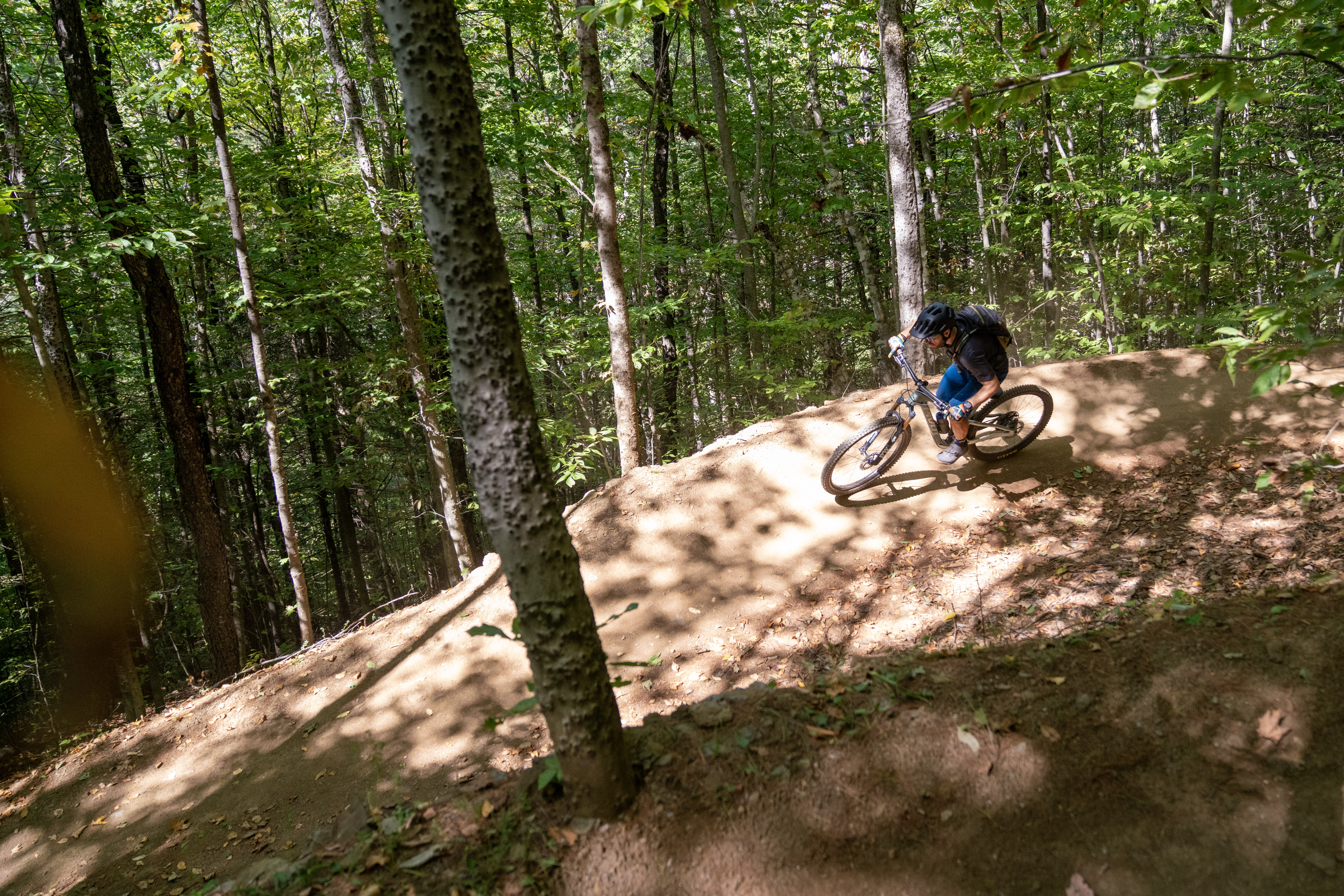
“Would you like a hand with your luggage?” asked the friendly bellhop.
“No thanks, I think I’ve got it,” I grunted as I hauled my battered REI duffel bag out of the SUV. I always feel awkward whenever someone offers to help me with my luggage. It’s a subtle sign that somehow I’ve stumbled my way into a place where I don’t belong — a point driven home when she offered to have our car valeted, too.
Jeff and I had just finished an epic mountain bike ride deep in one of the wildest parts of Vermont, and a couple of hours later, we were traipsing into one of the most expensive hotels I’ve ever visited. We had just a couple of minutes before dinner to sniff out a sitting room with free fresh-baked cookies and coffee — the perfect introduction to our stay at the Woodstock Inn. While there weren’t any champagne flutes at check-in, sweat-crusted and dirty, we felt out of place.
Mountain bikers 🤝 Woodstock Inn
The next day, we met up with our local guides from the Woodstock Area Mountain Bike Association (WAMBA) for a ride on the Mount Peg trails (also written as Mt. Peg). While we had felt out of place staying in rooms that cost north of $700 per night, we learned from Seth Westbrook, co-founder of WAMBA, and Kent McFarland, Trail Boss for Mount Peg, that all of the land that Woodstock’s marquee trail system is built on is owned by the Woodstock Inn. In addition, another of WAMBA’s three trail systems is built on a separate piece of property owned by the Inn.



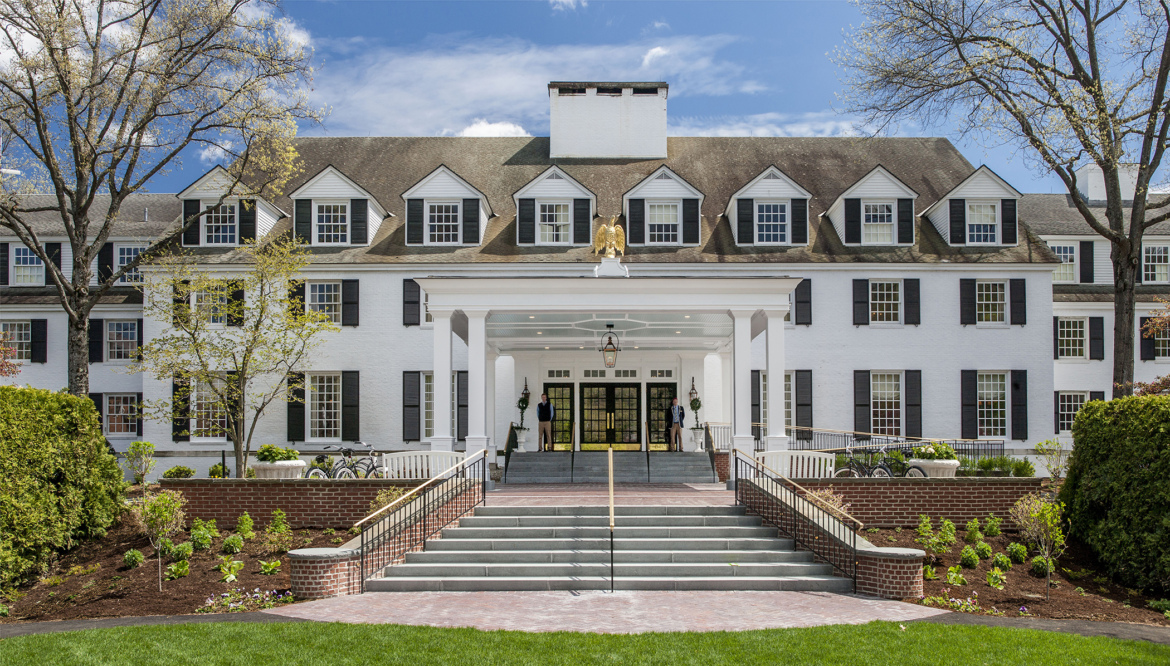
The word “Inn” doesn’t quite convey what this local institution truly offers. It’s better to think of the Inn as a luxury resort hidden away in the heavily wooded Vermont mountains. The Inn boasts one of the best restaurants in town, as well as a slew of amenities for its guests: a golf club, downhill ski area, nordic ski area, spa, gardens, an athletic club, and plenty of other activities like fly fishing and tennis.
And of course: mountain biking. It’s clear that Woodstock’s mountain bike scene would be next to non-existent without the Inn giving WAMBA permission to build trails, and the local club remains a committed and appreciative partner.
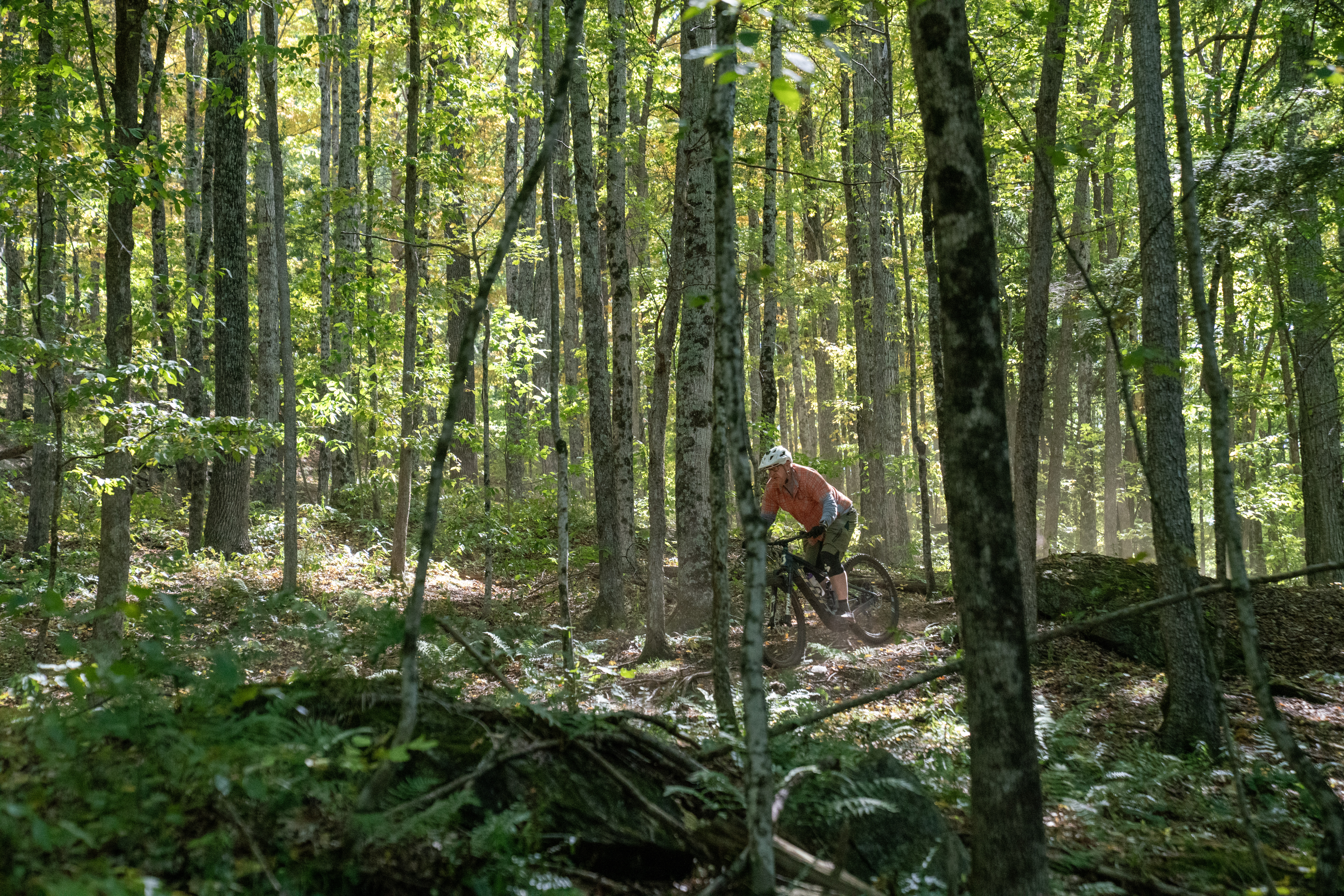
Mount Peg is one of Vermont’s premier trail systems
As we spent a week traveling around Vermont, we spoke with several riders across the state who listed Mount Peg as one of their favorite trail systems — and it is easy to see why. After meeting the guys at the East End and checking out Route 4 Bikes, a mobile bike shop owned by long-time local mechanic Linda Yoder, we were able to pedal straight from downtown and up into the trail system.
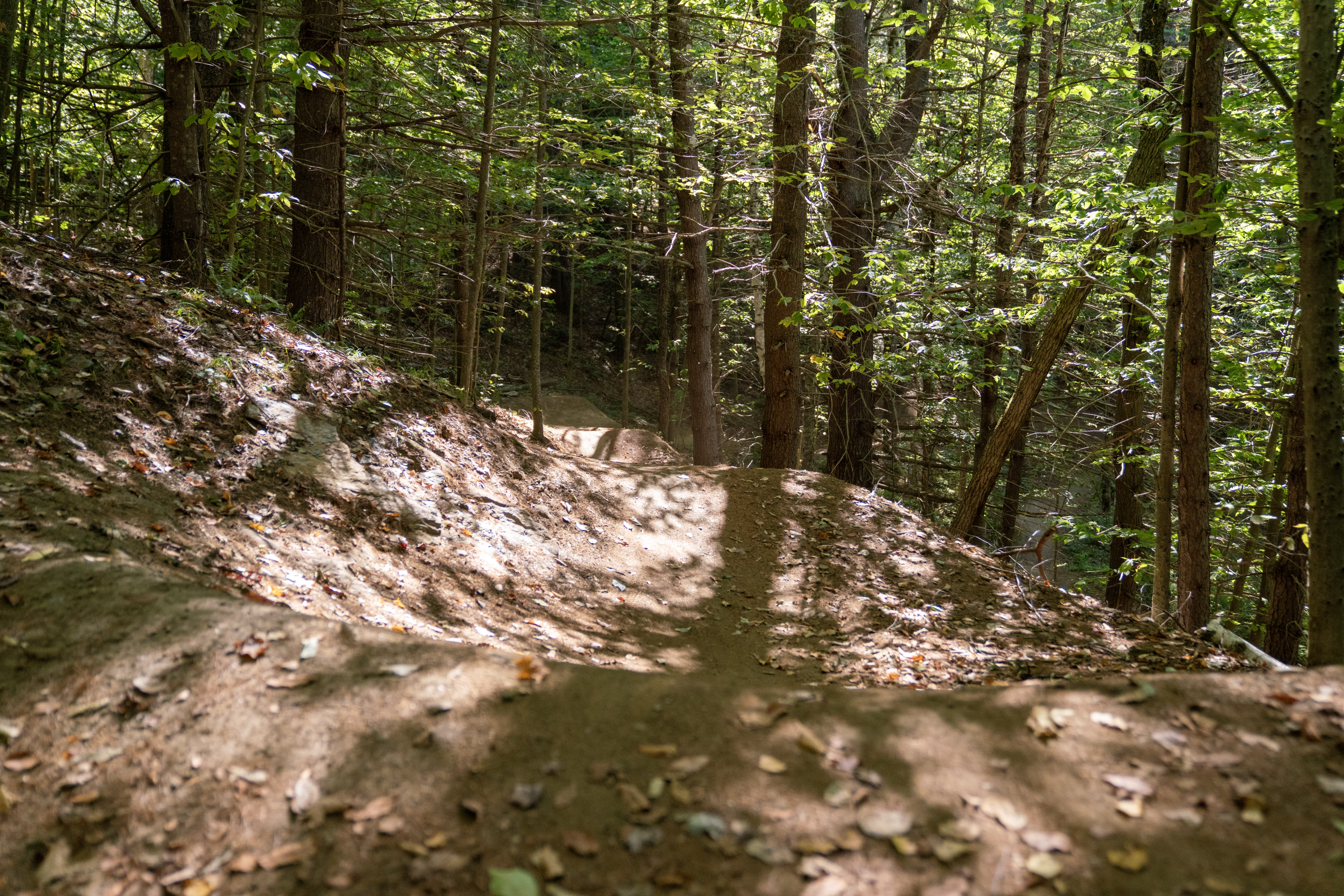
Adaptive-friendly trails accessible right from downtown
We began by climbing the Village Trail — a critical connection on the north end of the network located on city land that connects to the bulk of the network on the Inn’s land. This popular access point is actually one of the newest trails in the system — WAMBA only earned permission to build on city land after years of proving they could build and maintain high-quality mountain bike trails.
Mount Peg is an intricate network of trails spread along a steep hillside, and it is home to several distinct sections. The wide, smooth (but still plenty steep) Village Trail leads to the “North End” of the network. Vermont is one of the nationwide leaders in building and retrofitting mountain bike trails to be adaptive-friendly, and the Village Trail was already built with adaptive bikes in mind. McFarland then had the idea of retrofitting the existing North End trails to be both more adaptive- and beginner-friendly. By changing a few features and widening the corridor slightly, both adaptive and beginner riders can now pedal a fantastic lollipop loop on the North End, right from downtown.
“It’s pretty mellow, and all machine-built,” said Westbrook. “There’s still plenty of fun downhills and climbs and features, but it’s a lot smoother and more favorable to someone who doesn’t want rough or scary trail — you know, just learning.”
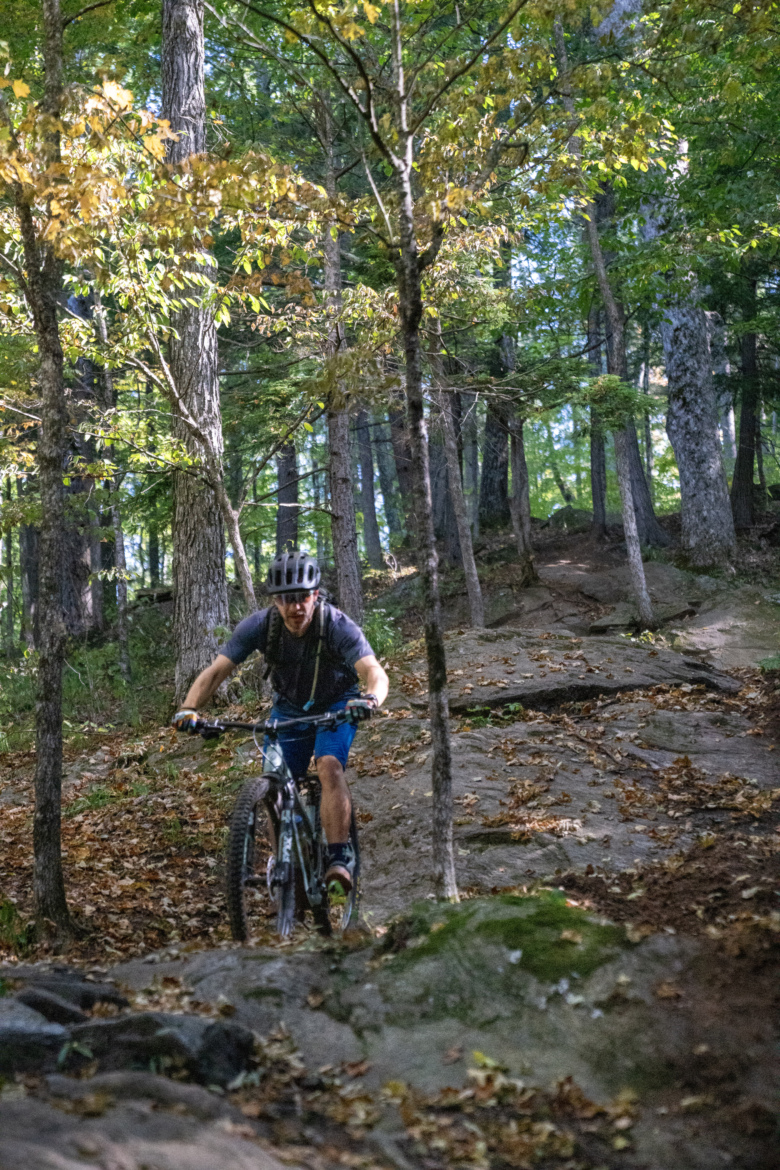
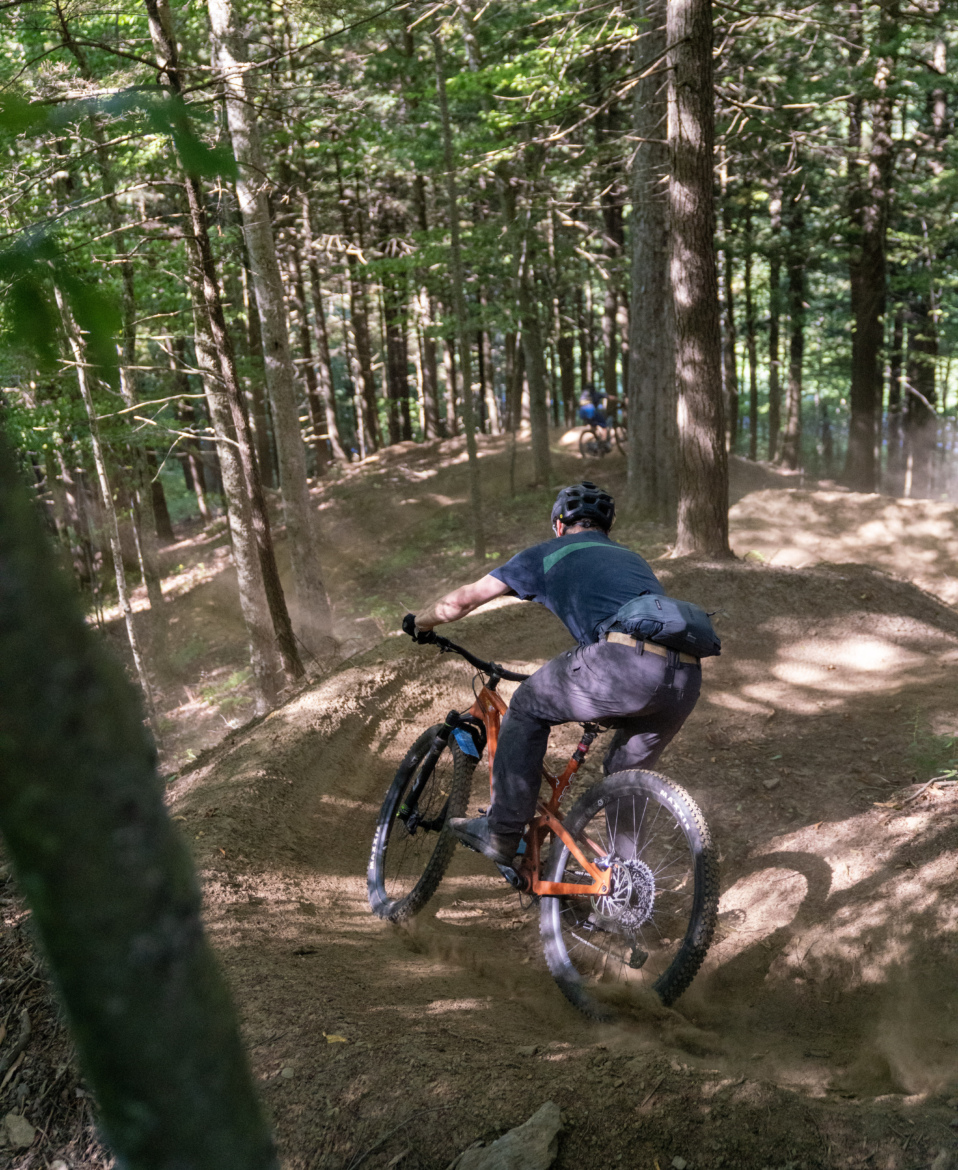
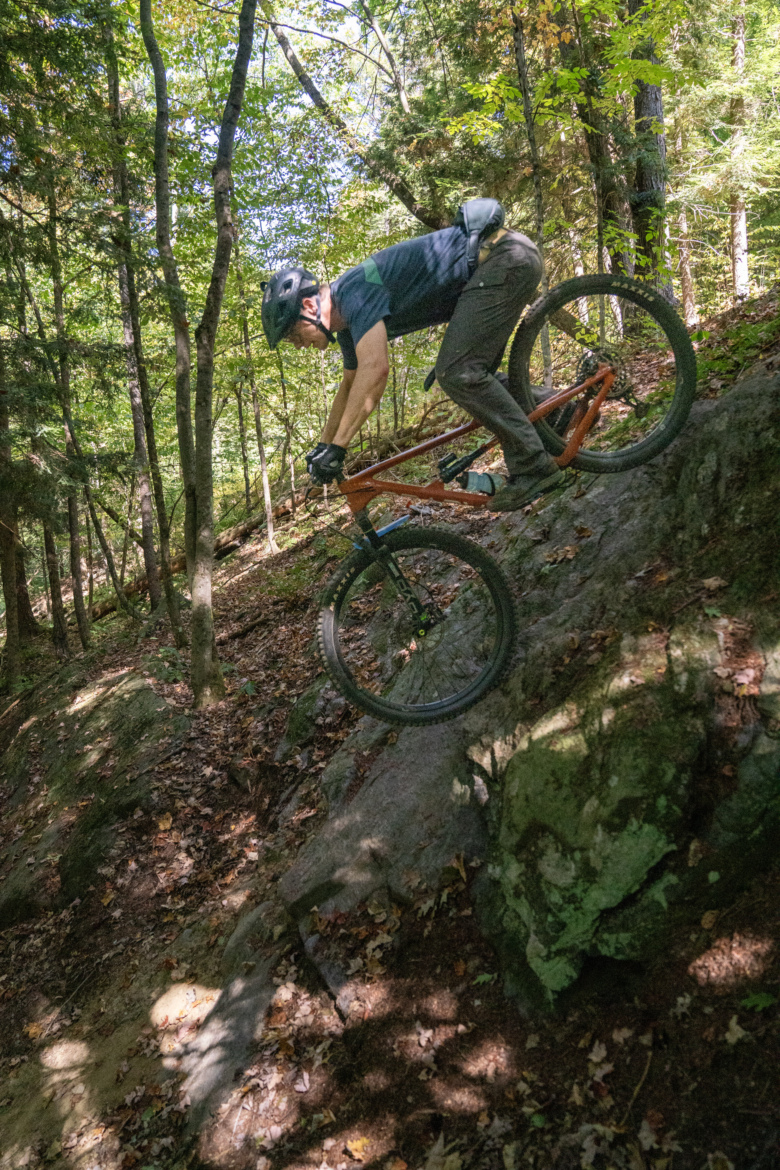
All killer, no filler
We turned our tires south, toward the more historic trails in the network. Westbrook and McFarland led us on a merry chase through the dense network, climbing and descending steep singletrack and connecting the best bits together. While Mount Peg only has about 15 miles of singletrack in total, the trails are of the highest quality.
It’s all killer, no filler riding. When we weren’t descending, we were climbing back up a still-entertaining trail to reach the next downhill. While the hillside isn’t very tall, it’s plenty steep — and Westbrook explained that they specifically built the trails to offer “enduro-style downhill,” basically meaning that they maximized the descents as much as possible. During our ride, we ripped multiple descents boasting 500 vertical feet.
This trail design is due in part to when WAMBA was founded. The organization got off the ground around 2015, with most of the trail construction at Mount Peg beginning in 2017 and running to the present day. The locals designed and built many of these trails during the height of interest in enduro mountain biking, which differs from the older, cross-country roots of networks like the Kingdom Trails. As we rode the Kingdom Trails the following day, the differences were plain to see.
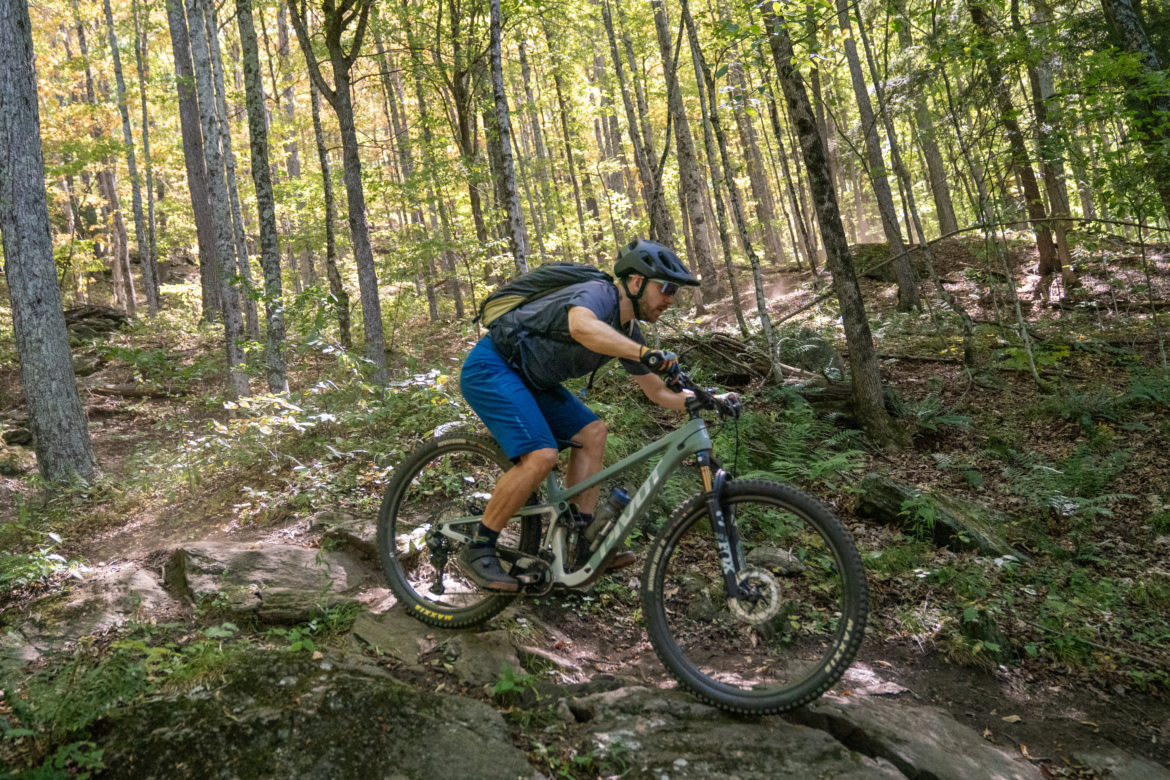
Tech and flow — why choose just one?
While the Mount Peg trails are built around the descents, it’s not all tech, and it’s not all flow. Instead, you can pick your poison or say, “Why not both?”
Woodstock’s best tech trails include Trap Line, James Jungle, Schist Creek, and Hardstyle. These steep, fast descents have plenty of old-school root webs and narrow singletrack, and they make the most of the rock features found on the hillside. Wherever possible, the trails roll straight down exposed slabs or rugged rock fields, providing plenty of entertaining features to scope out and session. While most of the slabs are fairly short, one feature in particular descends some 50 feet or more.
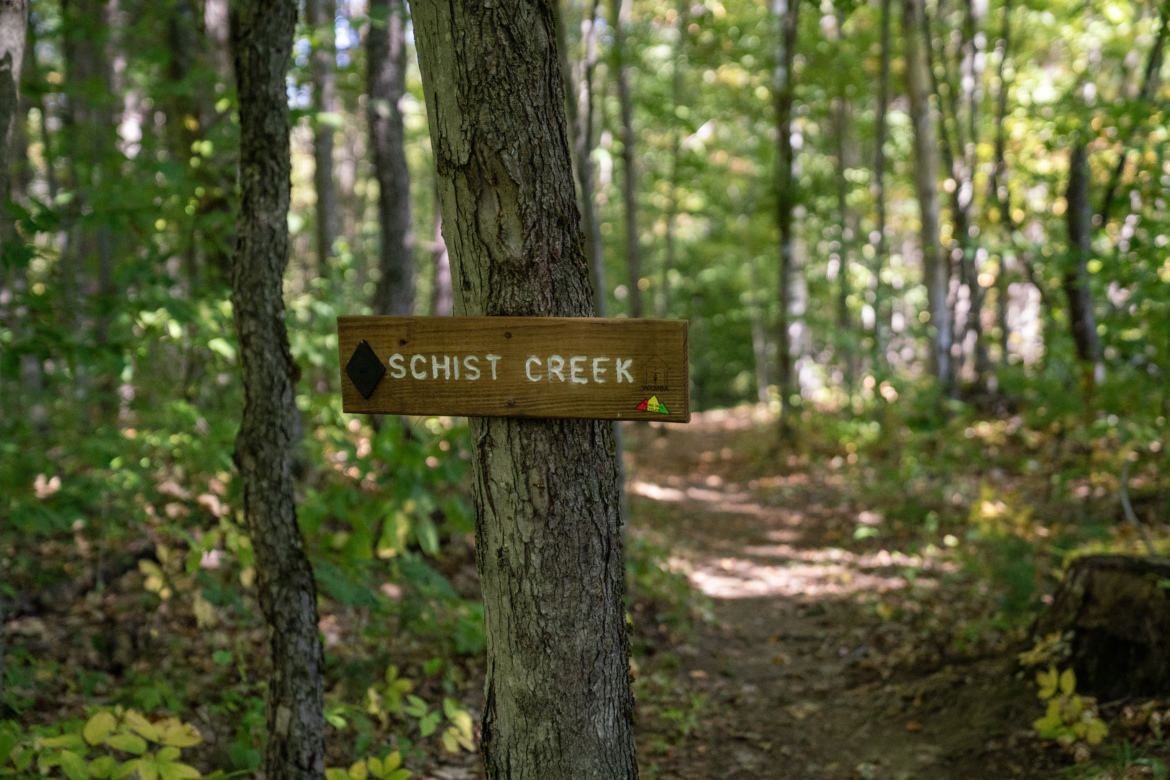
After WAMBA builds a trail, they don’t just abandon it. One of the toughest trails on the mountain, Schist Creek, was recently revamped thanks to a grant from Velocio. “I think parts of it were too raw,” said Westbrook. WAMBA’s rework consisted of “improving flow in certain areas, making it a little less raw in some spots, but then also keeping that flavor and improving the rideability in some spots.” Schist Creek features some of the biggest rock rolls on the hillside, and I can confirm that those features are still plenty spicy!
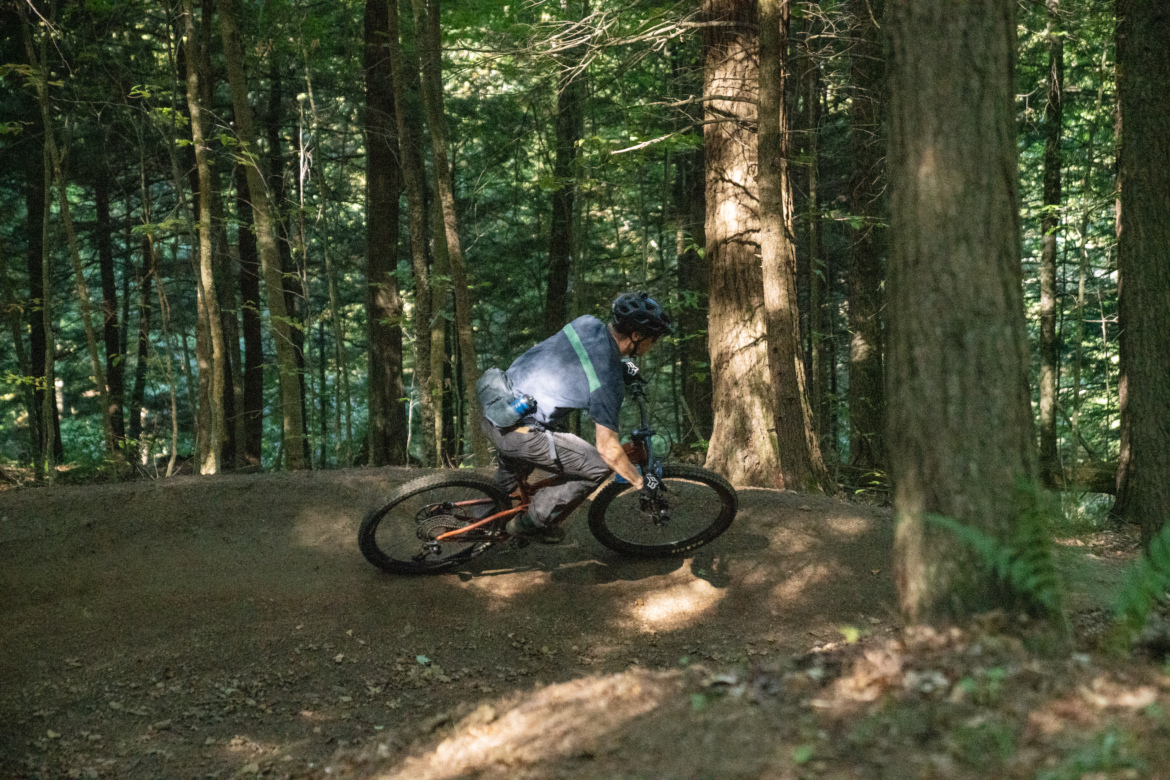
When it comes to flow, a few trails stand out: Ridge Run, Cloud Drop, and Sir Bermsalot. The bottom of Ridge Run features a mind-bending set of steep berms stacked one on top of the other. While McFarland acknowledged that they have to rebuild these steep berms every few years, the trail is a favorite with locals and visitors alike.
Cloud Drop is essentially a warm-up for the main feature: Sir Bermsalot. By far the most popular trail in the system, Sir Bermsalot is a quintessential flow trail, and it packs in a little bit of everything. As I railed down the mountain, I spotted massive berms, mid-sized table tops, shark fins, hip transfers, berm transfers, big gaps, and more. While the trail gets an intermediate rating, WAMBA’s main trail builder, Gavin Vaughn, has been known to send massive gaps on this trail that the average rider will never even spot.
Sir Bermsalot is so feature-rich that it’s tough to enjoy it after just one run. Your best bet is to lap it a few times to get a sense of how the features connect, and then really send it.
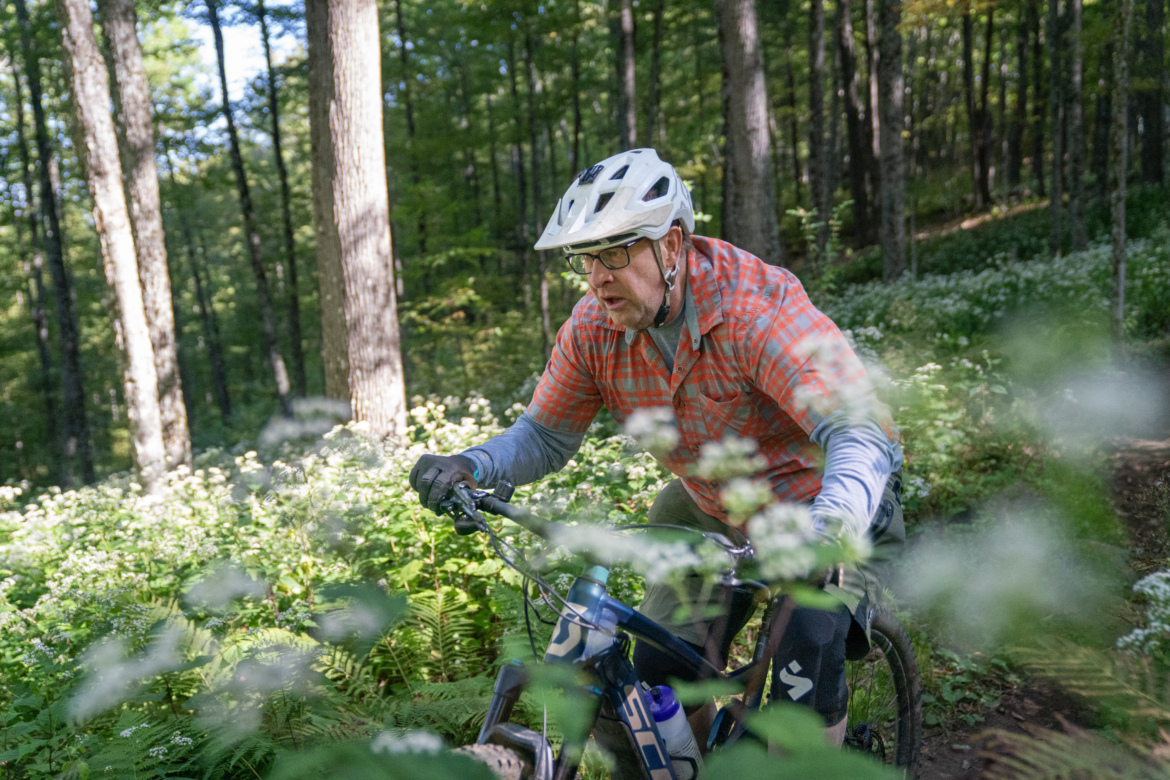
Great trails mean more grimy mountain bikers (with money to spend)?
The Woodstock Inn isn’t the only pretentious building in town. This historic city has long history of wealthy residents and visitors alike, with names like “Rockefeller,” “Billings,” “Faulkner,” and “Marsh.” Walking around downtown reveals numerous mansions and estates, and a quick Zillow check reveals a median home value that’s shockingly high for Vermont. In fact, while the Inn’s history dates back to 1793, the current building was constructed beginning in 1969 under the ownership of Laurance S. Rockefeller.
And yet, thanks to the impact of these mountain bike trails, Woodstock might slowly be changing.
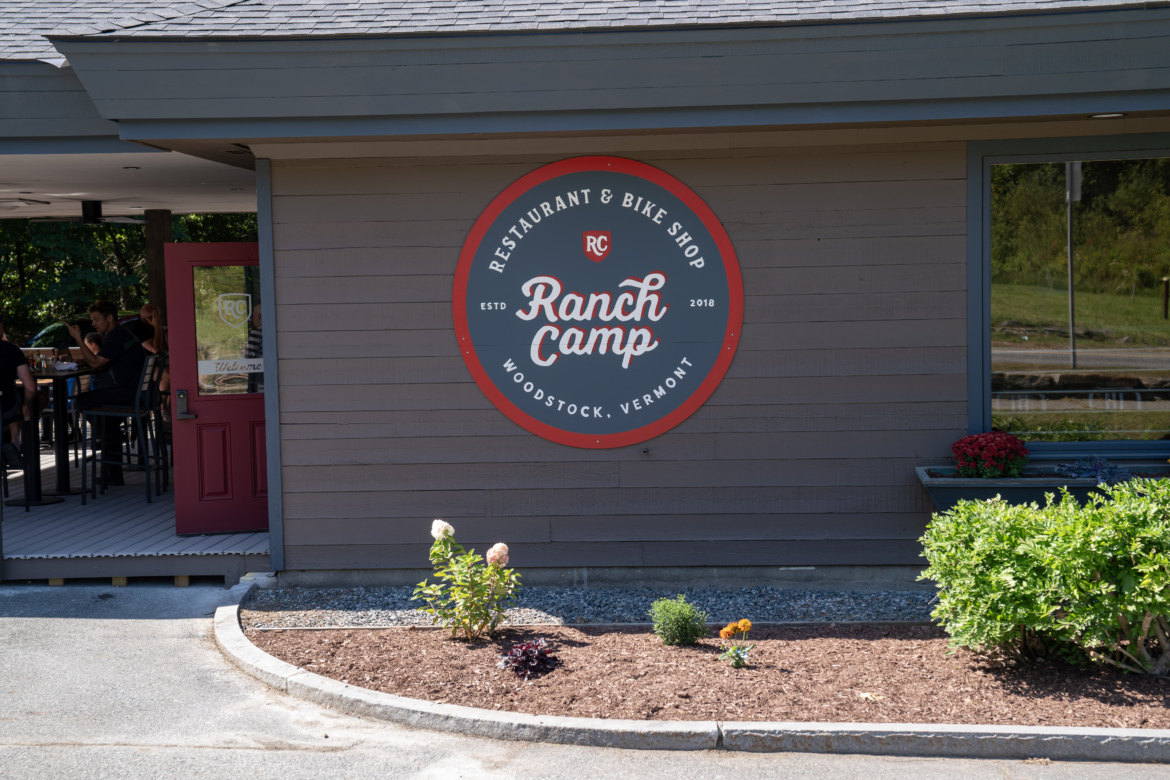
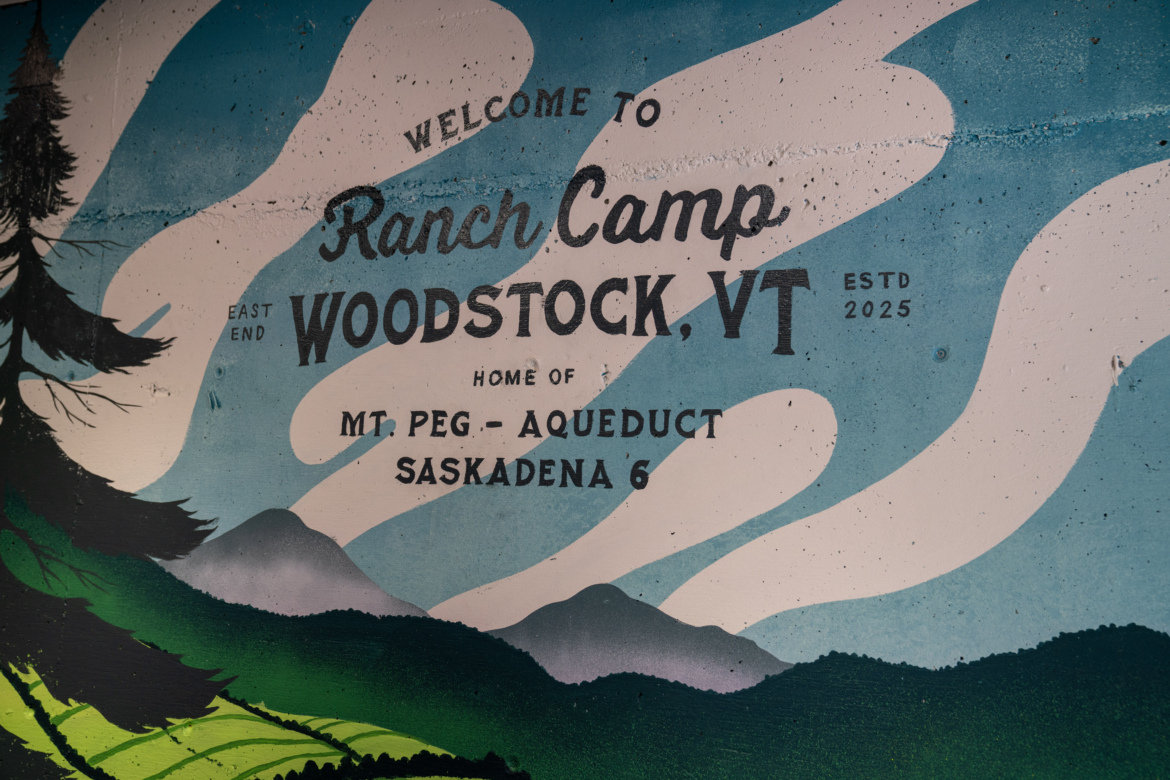

The day before we arrived in Woodstock, a new establishment had just opened to the public: Ranch Camp Woodstock. This new outfit, modeled after their successful Stowe location, boasts a well-equipped bike shop with sales, service, and rentals, and a restaurant serving a combination of burgers, burritos, salads, craft beer, and more — but at a price that riders can actually afford. Along with reasonable prices, we found the food to be high-quality and a welcome addition to Woodstock’s limited dining options.
Ranch Camp was clearly founded by mountain bikers, for mountain bikers. If the attached bike shop wasn’t enough, the high-end mountain bike hanging from the wall in the restaurant was a dead giveaway. As we sat on the patio and enjoyed our fantastic burritos (they offer numerous vegan options as well), several local riders flowed in and out of the restaurant, greeting McFarland and Westbrook. Vaughn’s father even joined us for a drink.
The Ranch Camp owners told WAMBA that they wouldn’t have opened this business if it wasn’t for the incredible trails in Woodstock. I mean, obviously — it doesn’t take a rocket scientist to add two and two to get four.
Might the founding of this restaurant signal a cultural change coming to this part of Vermont? We’ll just have to come back in a few years to find out!








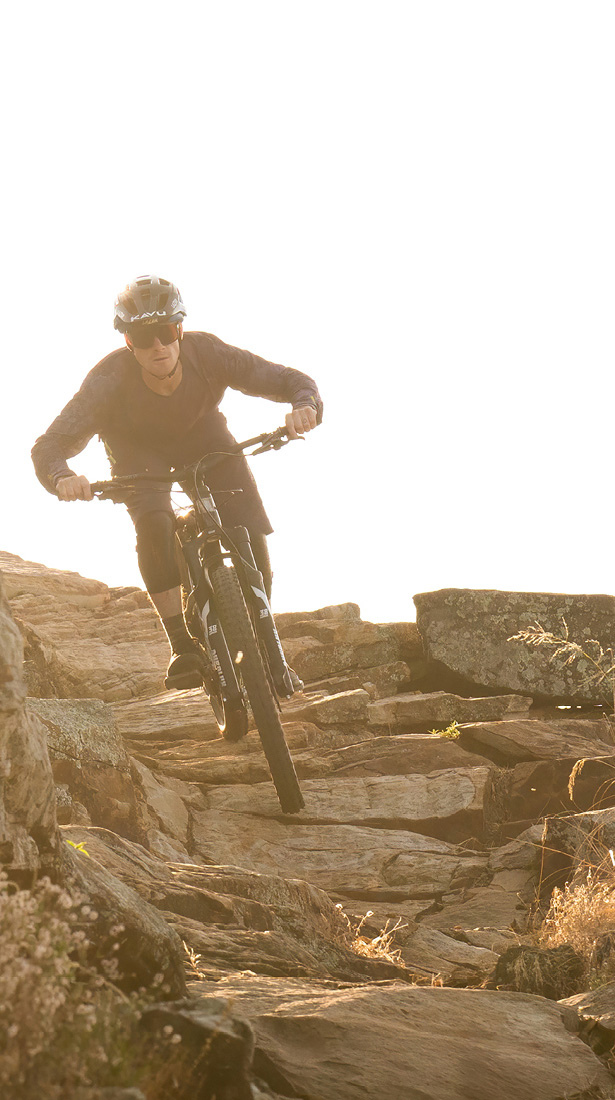
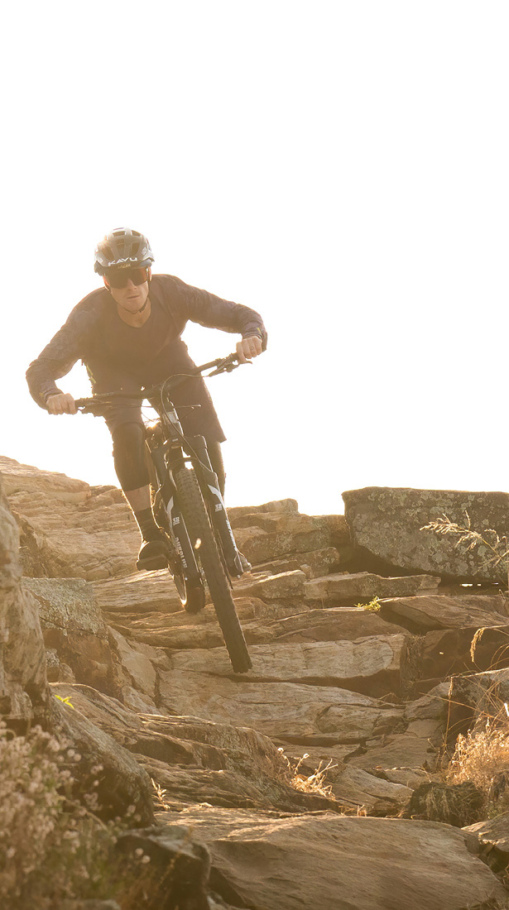
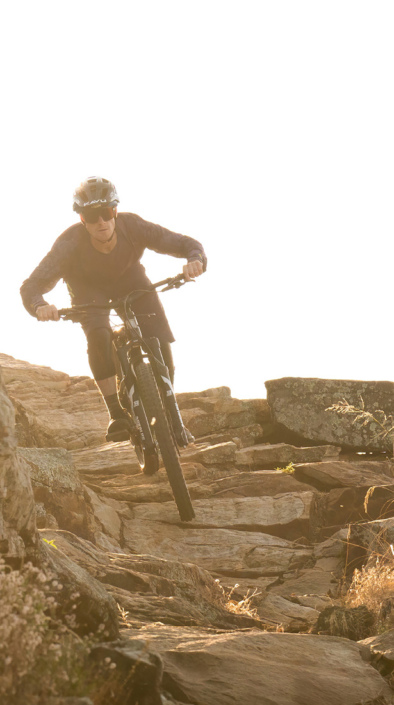

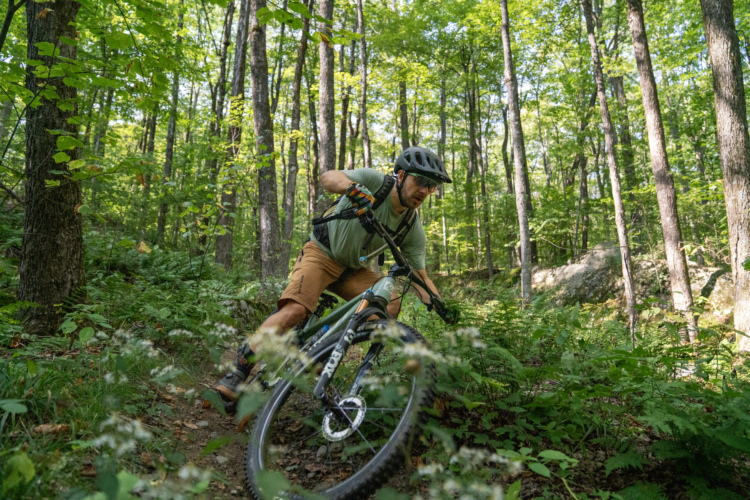
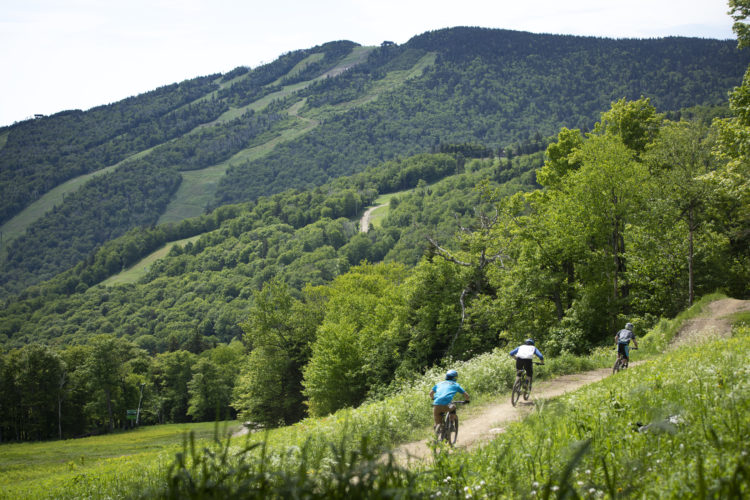

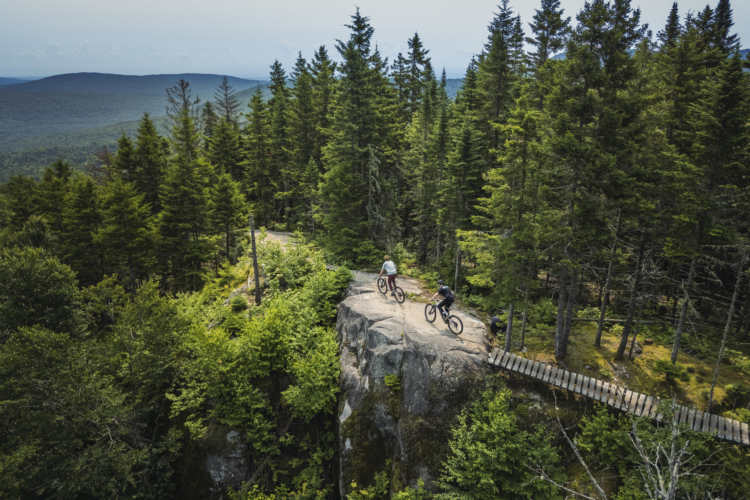



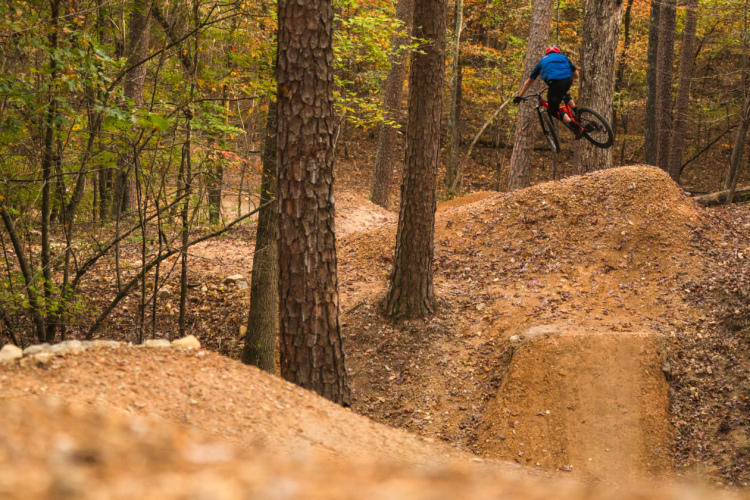

1 Comments
4 hours ago